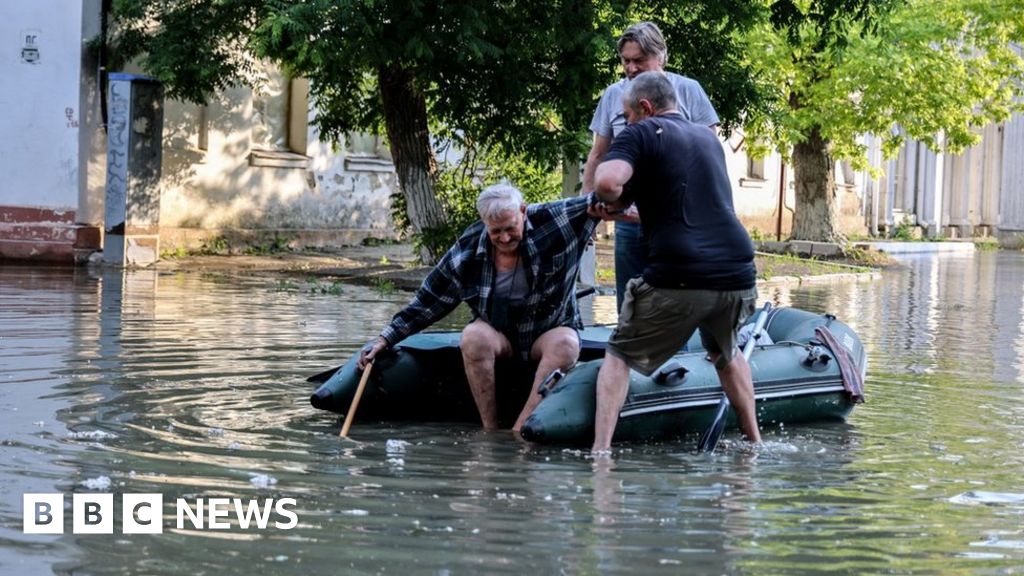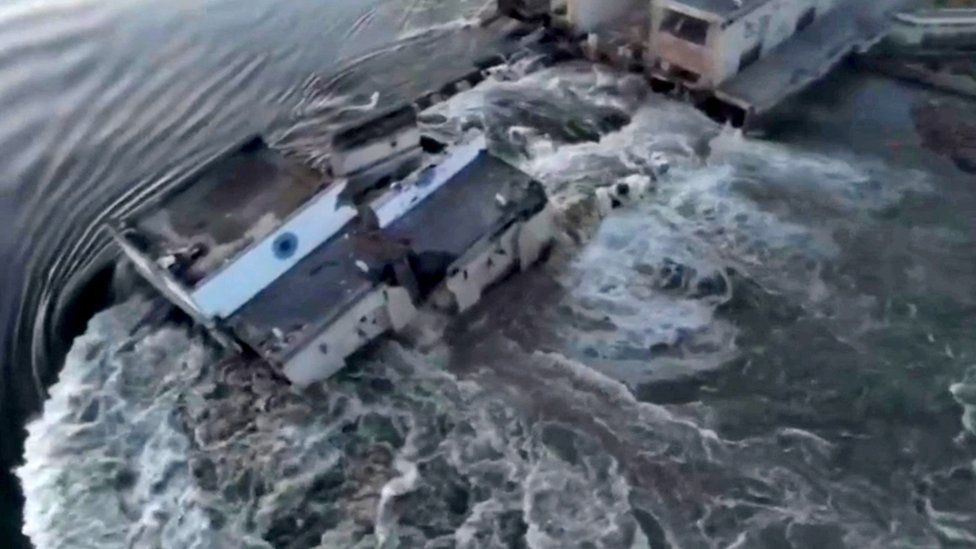This video can not be played
To play this video you need to enable JavaScript in your browser.
The destruction of a major dam in Ukraine will have “grave and far-reaching consequences for thousands of people”, the United Nations has warned.
UN aid chief Martin Griffiths said the scale of the catastrophe at the Kakhovka dam in southern Ukraine would only become clear in the coming days.
Thousands have fled flooded homes in the area, an active war zone. There are fears water levels could rise further.
Ukraine and Russia have accused each other of blowing up the dam on Tuesday.
The claims by the warring sides have not been verified by the BBC.
Addressing the UN Security Council late on Tuesday, Mr Griffiths warned that thousands of people in southern Ukraine were facing “the loss of homes, food, safe water and livelihoods”.
As mass evacuations continue on Wednesday morning in Ukraine’s Kherson region, satellite images have emerged showing widespread devastation there.
One of the photos showed a flooded port and industrial area in the regional capital Kherson, which is under Ukrainian control.
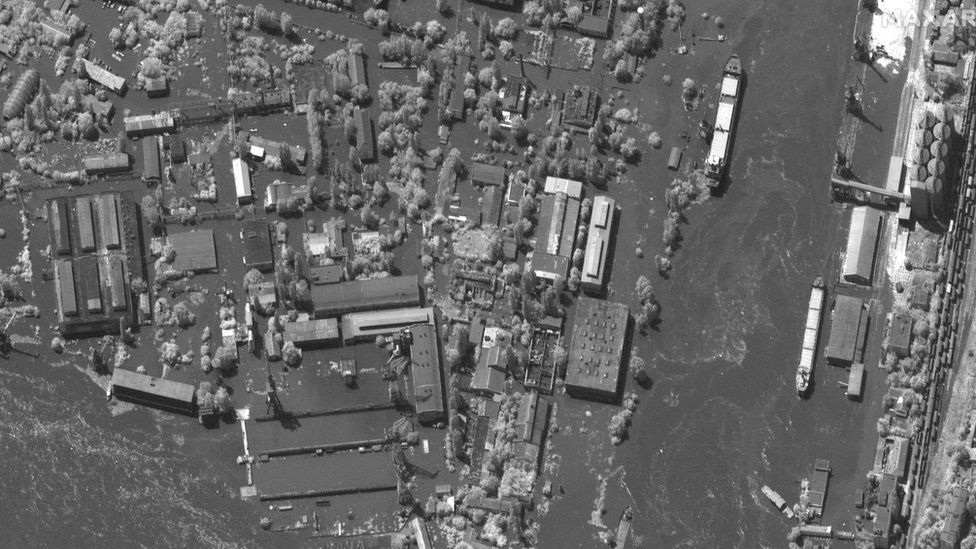
On Wednesday morning, 23 localities remained flooded, Ukrainian TV said in its latest news bulletin.
Overall, about 40,000 people needed to be evacuated, Ukraine’s Deputy Prosecutor-General Viktoriya Lytvynova said earlier: 17,000 in Ukraine-held territory west of the Dnipro River and 25,000 in the Russian-occupied east.
Some local residents have been seen desperately trying to save their belongings in homes with water levels nearing the ceiling.
The Kakhovka dam, downstream from the huge Kakhovka reservoir, provides much needed water to farmers and residents, as well as to the Zaporizhzhia nuclear power plant. It is also a vital channel carrying water south to Russian-occupied Crimea.
The peak of a huge water spill downstream from the emptying reservoir was expected on Wednesday morning, warned Ukraine’s state-owned hydropower plants administrator Ukrhydroenergo.
This video can not be played
To play this video you need to enable JavaScript in your browser.
It said this would be followed by a period of “stabilisation”, with the water expected to rapidly recede in four to five days.
There are concerns about the Zaporizhzhia nuclear power plant – Europe’s largest – which uses reservoir water for cooling.
The situation there is said to be under control and there is “no immediate nuclear safety risk” for the plant, according to the International Atomic Energy Agency (IAEA).
One local resident Andriy, who lives close to the dam – which was seized by Russian forces shortly after Moscow launched its full-scale invasion in February 2022 – said he believed Russia wanted to “drown” his city.


In the city of Kherson, a woman called Lyudmyla – who was loading her belongings including a washing machine onto a trailer that was attached to an old car – said: “We’re afraid of flooding. We’re taking our things a little higher up.”
She called for Russian forces to be “kicked out of here… they’re shooting at us. They’re flooding us or doing something else”.
Ukraine said two law enforcement officers were injured in Russian shelling as they were evacuating local residents on Tuesday.
On the Russian-seized riverbank of Nova Kakhovka, the Moscow-installed authorities reported on Wednesday morning that water levels in the flooded city were now receding.
Heavy flooding was earlier reported by the Kremlin-appointed officials in the nearby small town of Oleshky.
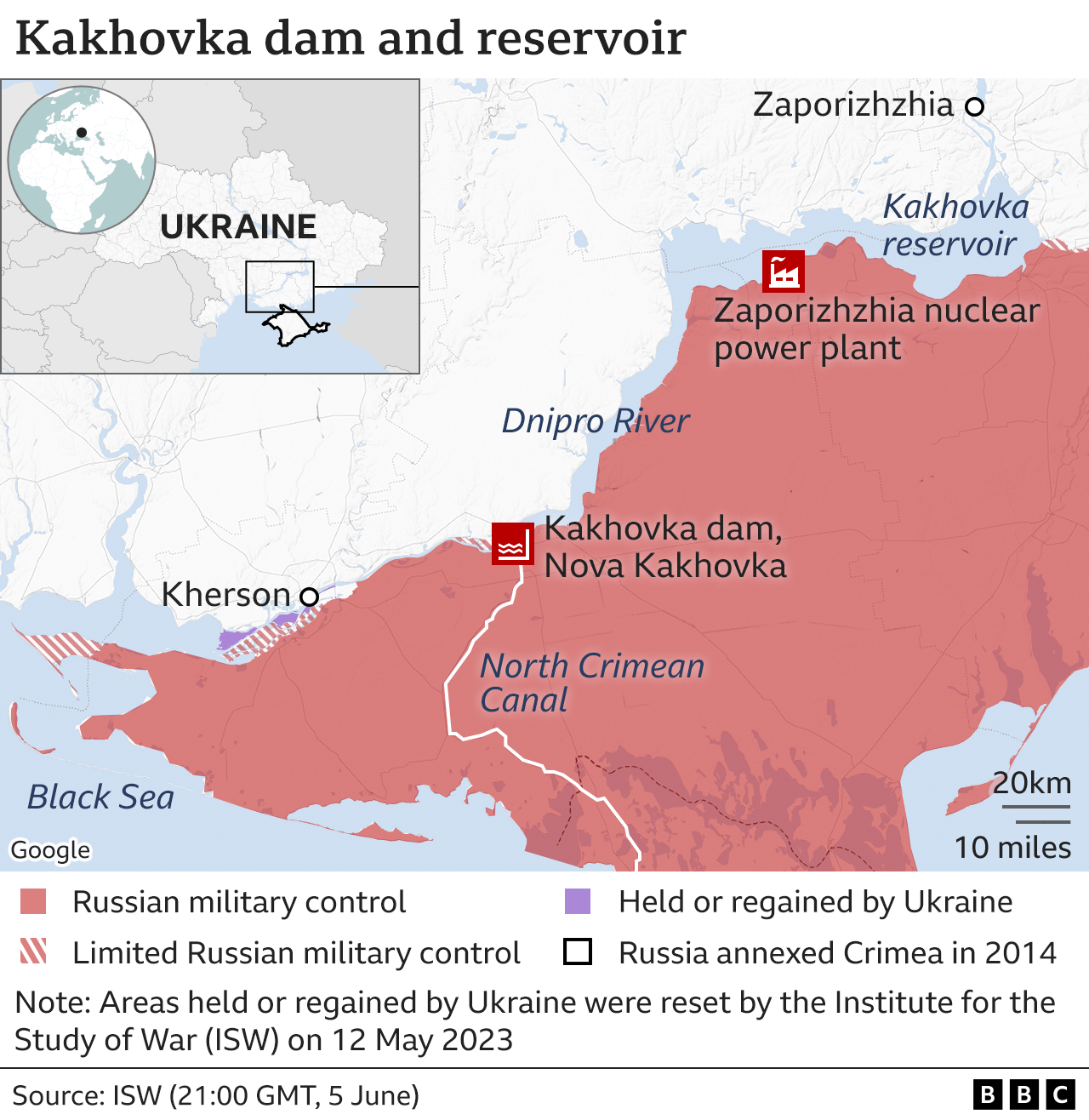
It is not yet clear what caused the breach in the dam, but Ukraine’s military intelligence has accused Russia of deliberately blowing it up to halt a long-expected Ukrainian counter-offensive.
On Tuesday evening, President Zelensky said the dam destruction would not stop Ukraine. “We will still liberate all our land,” he said in a video address.
Meanwhile, Russia claims Ukraine carried out the attack on the dam to detract from what Moscow says are Kyiv’s failures of its counter-offensive and to deprive Crimea – Ukraine’s southern peninsula illegally annexed by Russian in 2014 – of fresh water.
The Geneva Conventions explicitly ban targeting dams in war due to the danger it poses to civilians.
This video can not be played
To play this video you need to enable JavaScript in your browser.
Related Topics
-
-
18 hours ago
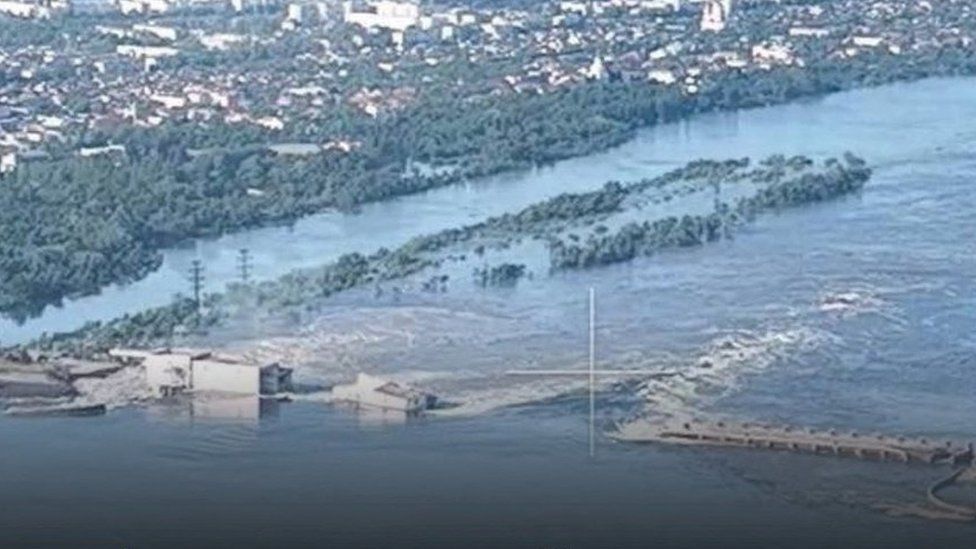
-
-
-
19 hours ago

-
-
-
15 hours ago
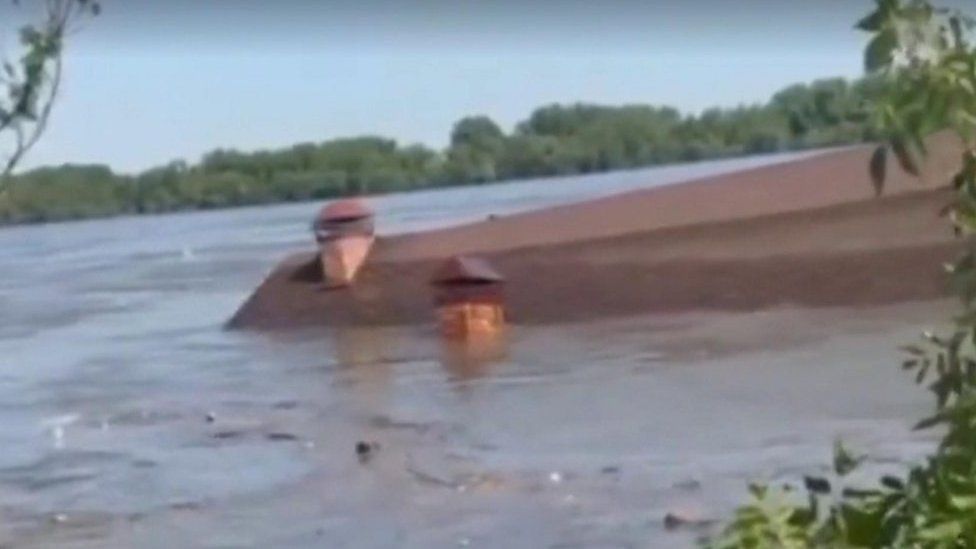
-
